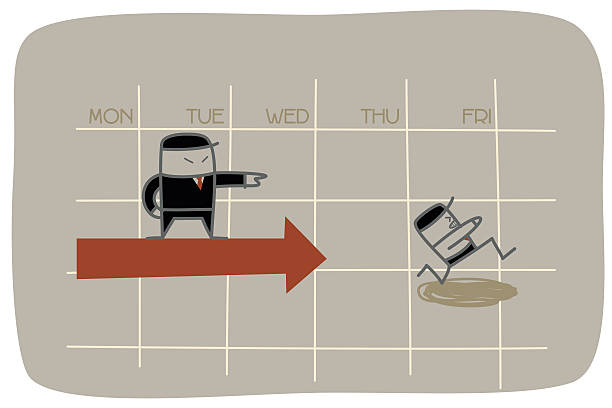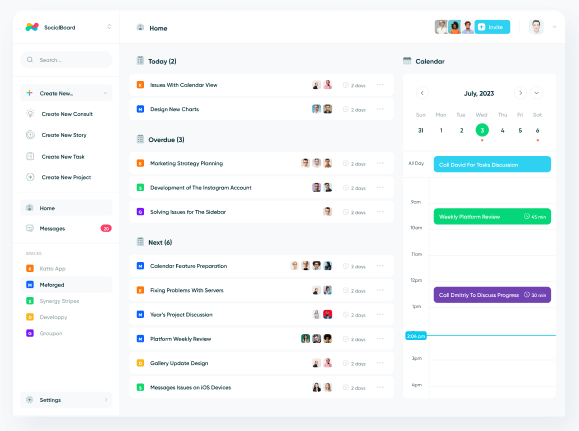Ever felt like your project was spiraling out of control? One day, everything seems on track, and the next, you’re juggling unexpected requests, new features, and shifting priorities. This phenomenon, often referred to as scope creep, is the silent project killer that sneaks up when boundaries aren’t clearly defined or maintained.
Did you know that 52% of projects experience scope creep, according to the Project Management Institute (PMI)? Worse yet, scope creep is one of the leading reasons why projects exceed budgets and miss deadlines. It doesn’t just derail timelines—it undermines team morale and client satisfaction.
Understanding scope creep and learning how to manage it effectively is crucial for keeping your projects on track. Let’s dive into what scope creep is, why it happens, and how you can tame this project management beast with proven strategies and tools.

 Understanding Scope Creep
Understanding Scope Creep
What is Scope Creep?
Scope creep refers to the gradual, often unplanned expansion of a project’s original boundaries. It typically happens when additional tasks, features, or requirements are introduced without proper approval or adjustments to the timeline and budget. This can start small but snowball into major disruptions.
For example, imagine you’re managing a website redesign. Initially, the project was limited to updating the design and improving user experience. Midway through, the client requests new content, integrations with third-party tools, and SEO enhancements—none of which were part of the original plan. Without proper controls, these additions can overwhelm your team and derail your project.
Common Scenarios Where Scope Creep Happens
- Client-driven changes: A stakeholder insists on new features they “forgot” to mention earlier.
- Unclear requirements: Ambiguous goals lead to interpretations that exceed the original scope.
- Technology challenges: Implementing unforeseen technical solutions adds complexity.
Why Does Scope Creep Occur?
- Poor Initial Planning
A poorly defined project scope is like starting a road trip without a map—you’re bound to get lost. Without clear deliverables, timelines, and expectations, everyone has a different interpretation of the project’s direction. - Changing Stakeholder Demands
Stakeholders can sometimes shift priorities mid-project, introducing new requirements. While flexibility is important, unchecked changes can lead to chaos if they aren’t properly managed or documented. - Lack of Clear Communication
Miscommunication between team members and stakeholders often leads to mismatched expectations. Without regular updates, feedback loops, or centralized communication channels, scope creep thrives.
By understanding these root causes, you can begin to anticipate and address scope creep before it becomes a significant problem. The next step is learning how to set boundaries and manage changes effectively.
 Top Strategies to Prevent Scope Creep
Top Strategies to Prevent Scope Creep
Set Clear Project Goals and Objectives

How to Define Deliverables Effectively
Defining deliverables is about clarity and specificity. Break down the project into smaller, measurable components that are easy to track. Ensure each deliverable aligns with the project’s overall objectives and includes detailed descriptions of expected outcomes.
Use of SMART Goals
SMART (Specific, Measurable, Achievable, Relevant, Time-bound) goals provide a structured framework for setting clear project objectives. For example, instead of saying, "Improve website traffic," a SMART goal would be, "Increase website traffic by 20% in three months through targeted SEO strategies."
Create a Robust Project Scope Statement
Elements of a Well-Defined Scope Statement
A strong scope statement outlines:
- Project objectives: What are you trying to achieve?
- Deliverables: What will be produced?
- Exclusions: What is not included in the scope?
- Timelines: When will the project be completed?
- Budget constraints: What are the financial limits?
The Role of Stakeholders in Scope Creation
Stakeholders play a critical role in defining the scope. Involve them early to gather requirements and ensure alignment. Regular stakeholder reviews prevent misunderstandings and reduce the likelihood of unexpected additions later.
Implement Change Management Processes
Steps to Handle Changes Without Derailing the Project
- Establish a clear process for submitting change requests.
- Evaluate each request's impact on the timeline, budget, and resources.
- Communicate the consequences of changes with all stakeholders.
- Approve or reject requests based on project priorities.
- Document every change to maintain a transparent record.
Examples of Effective Change Request Systems
Tools like Jira and Trello offer built-in change management workflows that allow teams to track requests, assign responsibilities, and monitor approvals in real-time.
Foster Open and Transparent Communication
Importance of Regular Updates and Feedback Loops
Frequent communication ensures everyone stays aligned with the project goals. Regular updates reduce ambiguity, and feedback loops enable teams to address potential issues before they escalate.
Tips for Productive Team and Stakeholder Meetings
- Set clear agendas to keep discussions focused.
- Use visual aids like Gantt charts or Kanban boards to track progress.
- Encourage input from all participants to foster a sense of ownership.
Use Project Management Tools
Project management tools help teams organize tasks, track progress, and communicate effectively. They centralize project data, making it easier to identify and address scope-related issues.
Pros and Cons of Project Management Tools
- Trello: Simple and visual, but lacks advanced features for complex projects.
- Asana: Robust task management, but may feel overwhelming for smaller teams.
- Edworking: Combines AI-driven insights and seamless collaboration, ideal for managing scope creep efficiently.
By implementing these strategies, you can significantly reduce the risk of scope creep and maintain control over your projects from start to finish.
 How to Identify and Address Scope Creep Mid-Project
How to Identify and Address Scope Creep Mid-Project

Recognizing Scope Creep Early
Key Warning Signs
Spotting scope creep early is essential to prevent it from escalating. Look out for these common red flags:
- Frequent unplanned tasks: New tasks keep appearing without official approval.
- Overloaded team members: Team members express concerns about workload or deadlines.
- Project milestones slipping: Deadlines are repeatedly missed or revised.
- Conflicting expectations: Stakeholders have differing views on deliverables or priorities.
Examples of Subtle and Blatant Scope Changes
- Subtle changes: A stakeholder asks for a "minor tweak," like adjusting a design element, that eventually requires significant effort.
- Blatant changes: Adding a completely new feature to the project, such as integrating a third-party service that wasn't part of the original plan.
Identifying these signs early helps you address scope creep before it becomes unmanageable.
Strategies to Mitigate Scope Creep Once It Occurs
Resetting Expectations with Stakeholders
When scope creep is identified, the first step is to reset expectations:
- Open communication: Discuss the scope changes with stakeholders and explain their impact on time, budget, and resources.
- Reprioritize deliverables: Identify the most critical tasks and defer or eliminate lower-priority items.
- Clarify approvals: Establish clear guidelines for how future changes will be handled.
Revisiting the Project Plan and Timeline
After resetting expectations, revisit the project plan:
- Reassess timelines: Adjust deadlines to accommodate the new requirements or remove tasks to stay on schedule.
- Review budgets: Ensure the project still aligns with financial constraints.
- Update the scope statement: Document all changes to keep the project scope transparent and well-defined.
By taking these proactive steps, you can regain control and guide the project back on track while maintaining stakeholder confidence.
 Tools to Manage Scope Creep Effectively
Tools to Manage Scope Creep Effectively
Features to Look for in Project Management Tools
To manage scope creep effectively, the right tools are essential. Look for tools with these key features:
- Task tracking: Clear organization of tasks and subtasks to ensure no detail is overlooked.
- Communication integration: Centralized communication channels to keep teams and stakeholders aligned.
- Reporting and analytics: Visual dashboards and data insights to monitor progress and identify potential risks.
- Change management: Workflows to track, evaluate, and approve scope changes.
- Collaboration tools: Seamless file sharing, real-time updates, and integrated calendars.
By ensuring these features are part of your toolkit, you can streamline project oversight and respond to changes more effectively.
Top Tools for Scope Management
Trello: Visual Workflows
Trello uses a Kanban-style board system to visualize workflows and track progress.
Pros
- Simple drag-and-drop interface.
- Customizable boards for different project types.
- Integration with third-party tools like Slack and Google Drive.
Cons
- Limited functionality for complex projects.
- Reporting and analytics require third-party plugins.
Asana: Task and Team Coordination
Asana excels in coordinating teams and managing tasks across various stages.
Pros
- Advanced task dependencies and priority settings.
- Comprehensive project views (list, board, and calendar).
- Built-in timelines for visualizing progress.
Cons
- May feel overwhelming for smaller teams or simpler projects.
- Some advanced features are restricted to paid plans.
Edworking: AI-Driven Project Insights and Collaboration
Edworking combines AI-powered insights and collaboration tools, making it a standout option for managing scope creep.
Pros
- AI features: Predictive insights that flag potential scope creep and suggest actionable solutions.
- Integrated communication: Real-time chat and task discussions to reduce miscommunication.
- Centralized project management: Combines task tracking, file sharing, and reporting in one platform.
- Ease of use: Intuitive interface designed for both small and large teams.
Cons
- Currently best suited for teams that rely heavily on integrated communication and AI-driven features.
 The Role of Edworking in Scope Management
The Role of Edworking in Scope Management

Effectively managing scope creep is crucial for project success, and Edworking offers a comprehensive solution to tackle this challenge. Let's explore how Edworking's features make it an ideal platform for managing scope creep.
Why Edworking is Ideal for Managing Scope Creep
AI-Powered Insights: How AI Identifies and Mitigates Potential Creep
Edworking integrates advanced AI capabilities that proactively monitor project parameters. The AI analyzes task progress, resource allocation, and timelines to detect anomalies that may indicate scope creep. By providing real-time alerts and actionable insights, Edworking enables teams to address issues before they escalate.
Integrated Collaboration: Keeping Teams Aligned in Real-Time
With features like task management, file sharing, and integrated video calls, Edworking ensures that all team members are on the same page. This unified approach reduces misunderstandings and keeps the project scope clear and controlled.
Centralized Communication: Seamless Chat and Task Management
Edworking's platform includes organized chat functionalities linked directly to tasks and projects. This centralization ensures that all communications are context-specific, making it easier to track decisions and changes related to the project scope.
By leveraging Edworking's AI-driven insights, integrated collaboration tools, and centralized communication features, teams can effectively manage and prevent scope creep, ensuring projects are completed on time and within budget.
 Conclusion
Conclusion
Scope creep is one of the most significant challenges in project management. Left unchecked, it can derail timelines, inflate budgets, and strain team relationships. But mastering scope creep isn’t just about avoiding these pitfalls—it’s about fostering better communication, improving planning, and leveraging the right tools to maintain control and clarity.
To stay ahead of scope creep, remember these actionable tips:
- Define clear goals and deliverables: Set boundaries early and ensure everyone is aligned.
- Use change management processes: Handle new requests methodically without compromising the project’s scope.
- Communicate effectively: Keep stakeholders and team members informed and engaged throughout the project.
- Leverage smart tools: Choose platforms like Edworking to streamline collaboration, monitor progress, and proactively prevent scope creep.
Ready to tackle scope creep head-on? Try Edworking and take your project management to the next level! With AI-powered insights, integrated collaboration, and centralized communication, Edworking empowers you to manage projects effortlessly and achieve success without compromise.
 FAQs
FAQs
What is scope creep in project management?
Scope creep refers to the gradual expansion of a project’s scope beyond its original objectives. It often happens when new tasks, features, or requirements are introduced without proper approval, leading to increased costs, extended timelines, and overworked teams.
How can I identify scope creep early?
You can identify scope creep by monitoring unplanned tasks, frequent deadline shifts, or conflicting expectations between stakeholders. Regular project reviews and progress tracking help spot these warning signs before they become major issues.
What are the primary causes of scope creep?
Scope creep is commonly caused by poor initial planning, unclear project requirements, changing stakeholder demands, and lack of communication. Addressing these issues proactively can help minimize the risk of scope creep.
How can project managers prevent scope creep?
Project managers can prevent scope creep by setting clear goals, creating a well-defined scope statement, implementing a change management process, and using project management tools to track progress and manage tasks effectively.
What tools are best for managing scope creep?
Tools like Trello, Asana, and Edworking are great for managing scope creep. They offer features like task tracking, collaboration, and AI-powered insights that help teams stay on track and address changes proactively.
How does Edworking help with scope creep?
Edworking helps by providing AI-powered insights to flag potential issues, centralized communication to reduce misunderstandings, and integrated collaboration tools to keep teams aligned. It simplifies managing changes while keeping projects on track.
Is scope creep always bad for a project?
Not necessarily. When managed properly, scope changes can add value to a project by addressing emerging needs or opportunities. The key is ensuring changes are approved, documented, and aligned with the project’s overall goals.
What is the difference between scope creep and scope change?
Scope creep refers to unplanned and uncontrolled changes, while scope change is a planned adjustment that is formally approved and incorporated into the project scope, timeline, and budget.
How can communication reduce scope creep?
Clear and consistent communication ensures all stakeholders are aligned on project goals and changes. Regular updates, feedback loops, and centralized communication tools help reduce misunderstandings and minimize the risk of unplanned scope changes.





